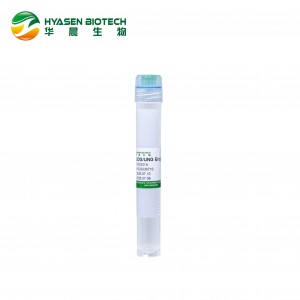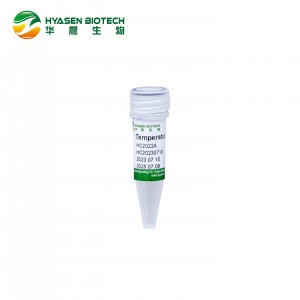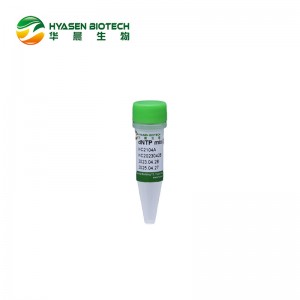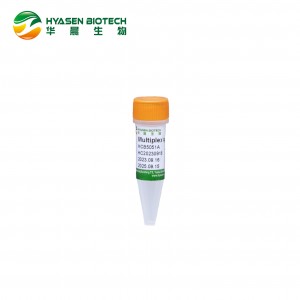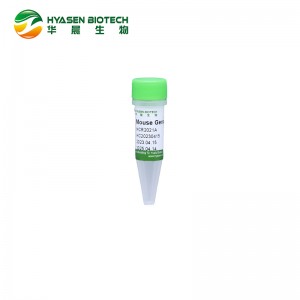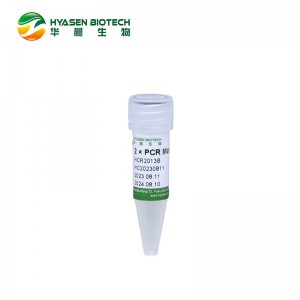
One Step Fast RT-qPCR Probe Premix-UNG
Cat No: HCR5143A
One Step RT-qPCR Probe Kit (FOR FAST) is a probe-based RT-qPCR fast detection kit suitable for single-plex or multiplex quantitative PCR using RNA as a template (such as RNA virus). This product uses a new generation of antibody-modified Taq DNA Polymerase and one-step dedicated Reverse Transcriptase, with an optimized buffer for rapid amplification, which has faster amplification speed, higher amplification efficiency and specificity. It supports balanced amplification in both single-plex and multiplex of low and high concentration samples in a short time.
Prodct Components
10×Fast Direct RTase/UNG Mix IV
2×Fast Direct RT Premix Buffer IV (dUTP)
Storage Conditions
The product is shipped with dry ice and can be stored at -20℃ for long time, and 4℃ for 3 months.
Instructions
1. Reaction System
|
Components |
25μL System |
50μL System |
Concentration |
|
10×Fast Direct RTase/UNG Mix IV |
12.5μL |
25μL |
1× |
|
2×Fast Direct RT Premix Buffer IV (dUTP) |
2.5μL |
5μL |
1× |
|
25×Primer-Probe Mix |
1μL |
2μL |
1× |
|
Samples |
— |
— |
— |
|
ddH2O |
up to 25μL |
up to 50μL |
— |
1. When using the ordinary PCR program for amplification, a final primer concentration of 0.2 uM can usually obtain better results. When the reaction performance is poor, the primer concentration can be adjusted within the range of 0.2~1uM. Usually, the probe concentration can be optimized within the range of 0.1~0.3uM. Concentration gradient experiments can be performed to find the best combination of primers and probes.
2. When using the rapid PCR program for amplification, appropriately increasing the primer probe concentration may obtain better amplification results, and the primer probe ratio should be optimized.
3. The types, contents and copy numbers of target genes contained in different types of biological samples are different; different types of sample preservation solutions (such as swab preservation solutions) also have different effects on the amplification reaction. Therefore, the optimal sample loading in the reaction system should be determined according to the actual situation such as sample type and detection sensitivity requirements. If necessary, the sample can be diluted with nuclease-free water or TE Buffer before loading. The recommended loading volume is as follows:
|
Sample type |
50μL system |
Maximum loading ratio |
|
Anticoagulated whole blood |
2.5μL |
5% |
|
Plasma |
10 μL |
30% |
|
Serum |
10 μL |
30% |
|
Swab |
10 μL |
20% |
|
20% fecal suspension |
0.5 μL |
1% |






